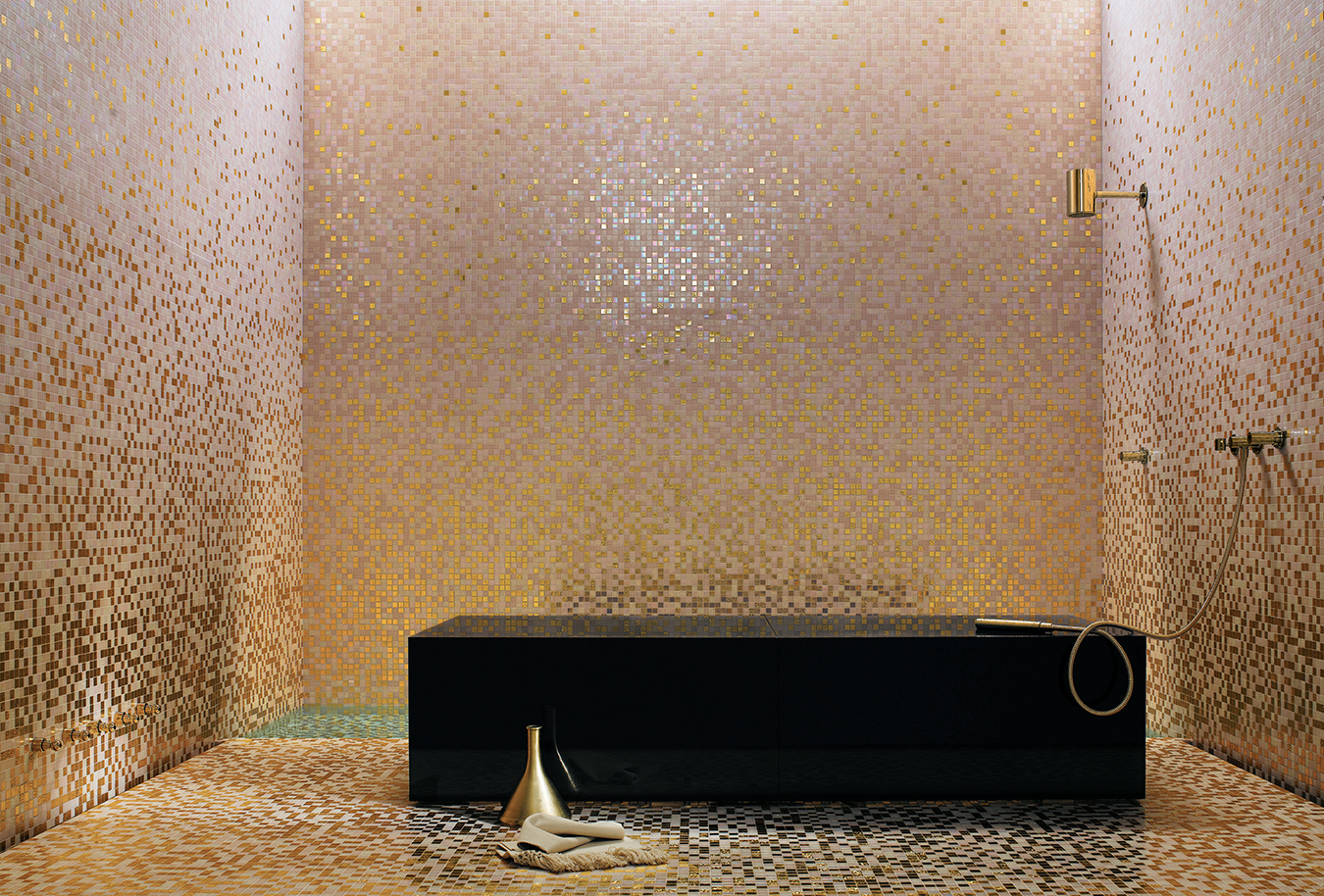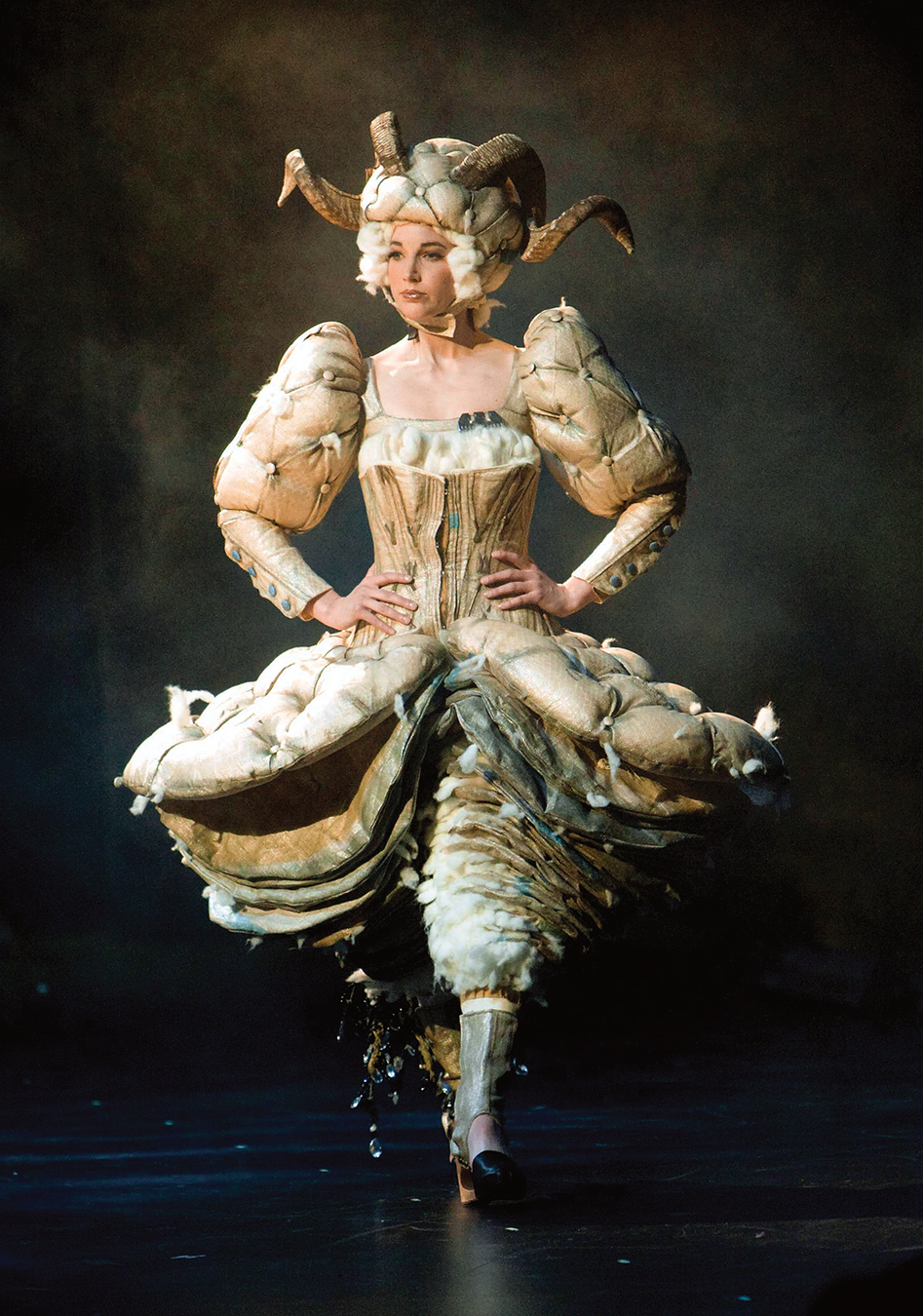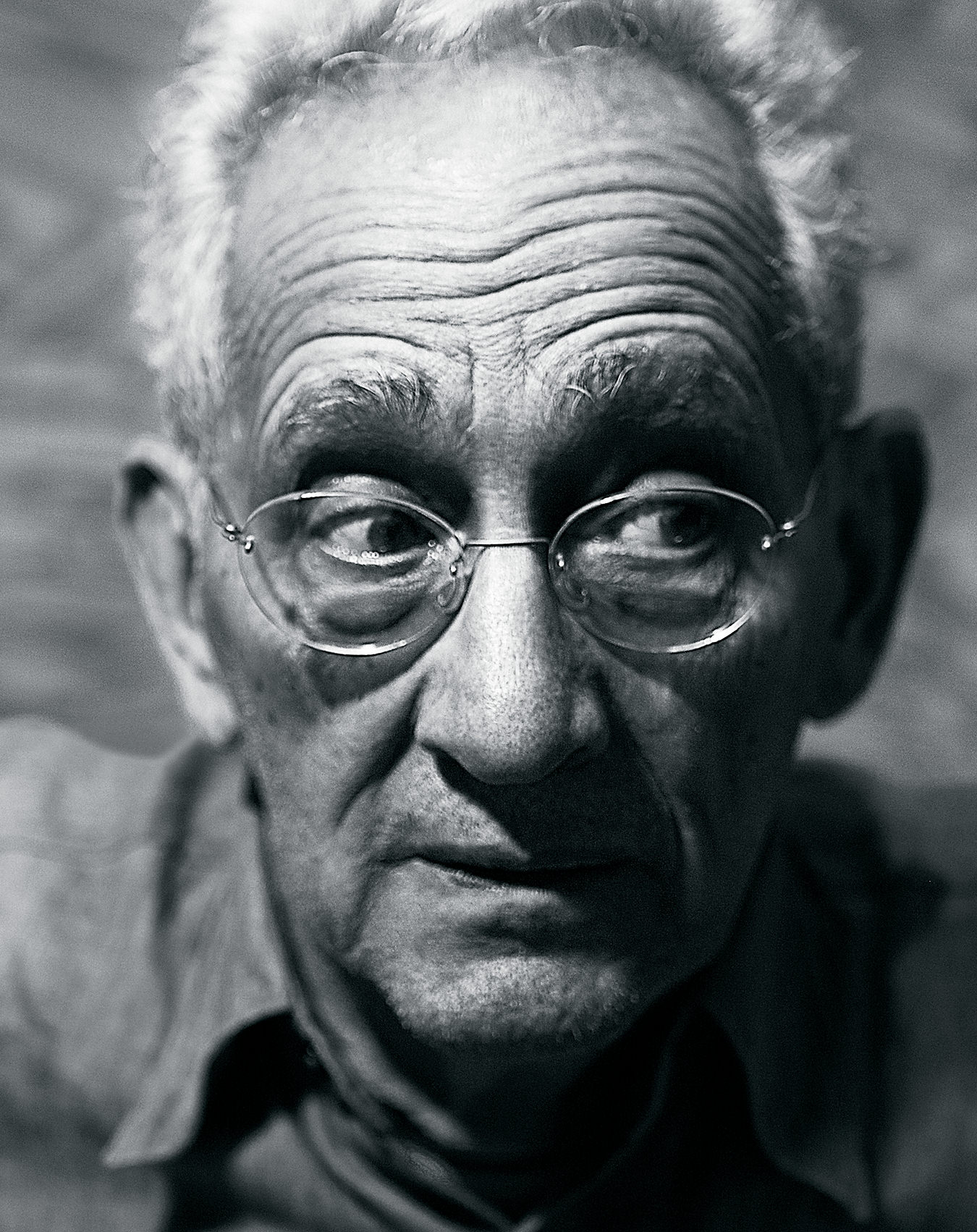The Most Stunning Masks of 2020 Channel Afrofuturism
Aesthetic tomorrow.
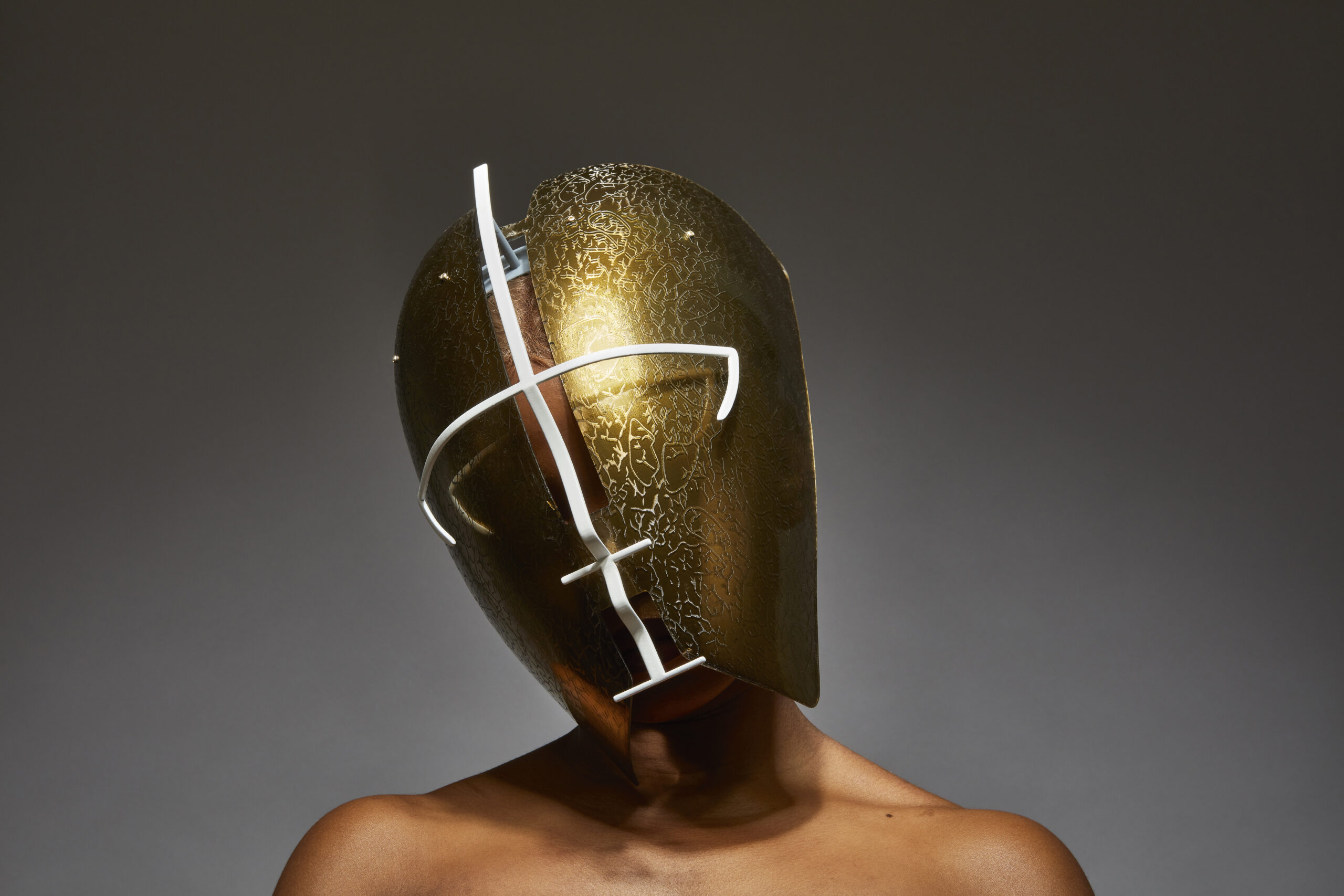
When it came to masks in 2020, it seemed there would be no end to the deluge of new products claiming innovation, sustainability, and every other accolade. There were so many face masks in development from so many brands that one missed the days where the only masks in the media were Batman or the Guy Fawkes ones. But then in early December, a wonderful golden visage appeared on my feed, straight from the closet of a cosmic dreamwalker.
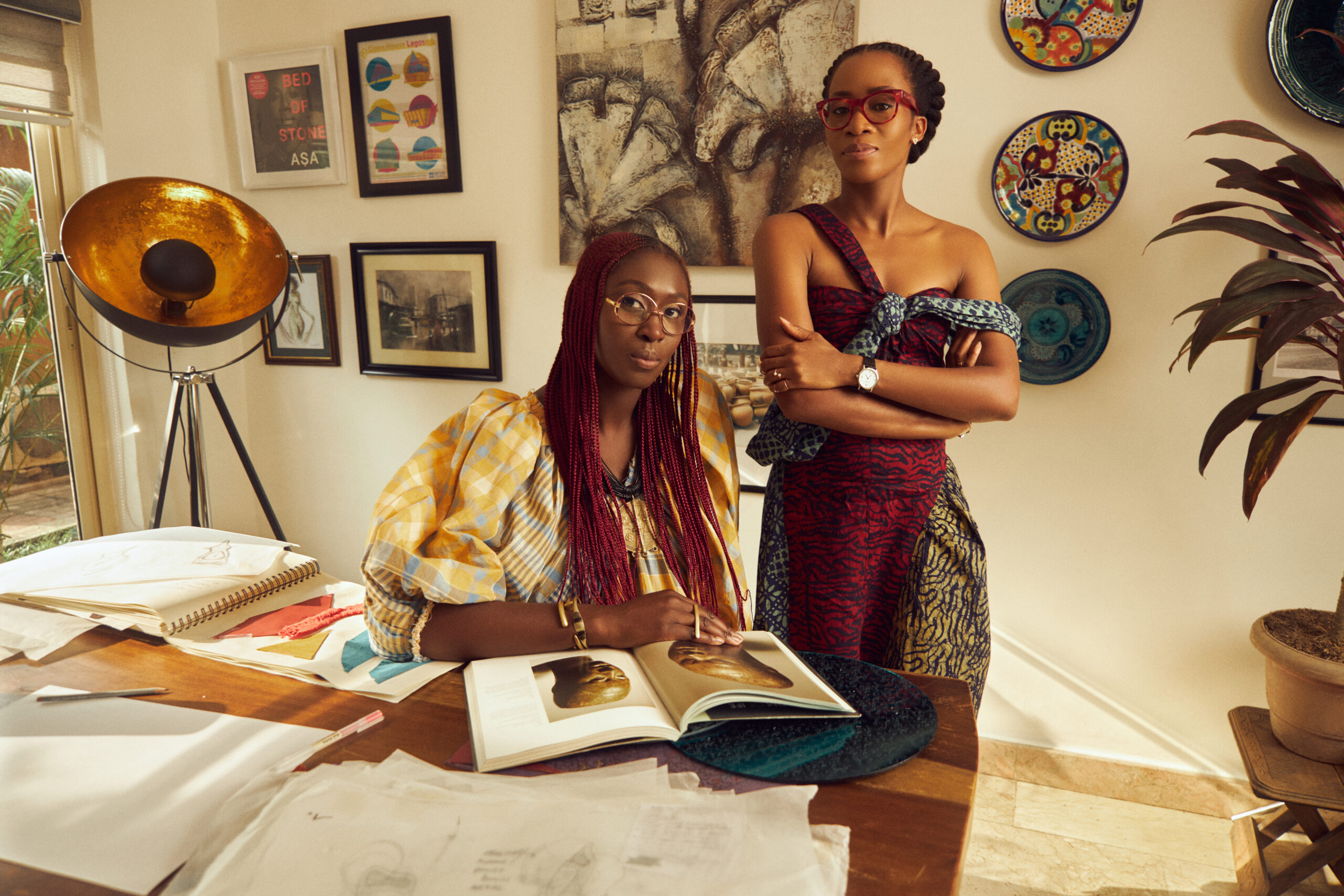
Chrissa Amuah and Tosin Oshinowo partnered with Lexus for the Freedom to Move campaign. Photo by Spark Creative
It is called Egaro, part of Lexus’s Freedom to Move campaign, and it comes with a glimpse of a future completely in context of a tradition and of the singular artistic visions of its creators, Tosin Oshinowo and Chrissa Amuah. From Nigeria and England respectively, the two creators designed three unique masks to be showcased at Design Miami/.

Egaro headpiece; photo by Mark Cockedge.
Each mask is different, taking design cues from Japan as well as Africa—and from the human-oriented processes that motivate brands like Lexus. Like any good design, the masks respond to a need to build a durable aesthetic around face masks, signalling the future while not ignoring the history of the mask, which has symbolized everything from transformation to secrets and authority throughout history.
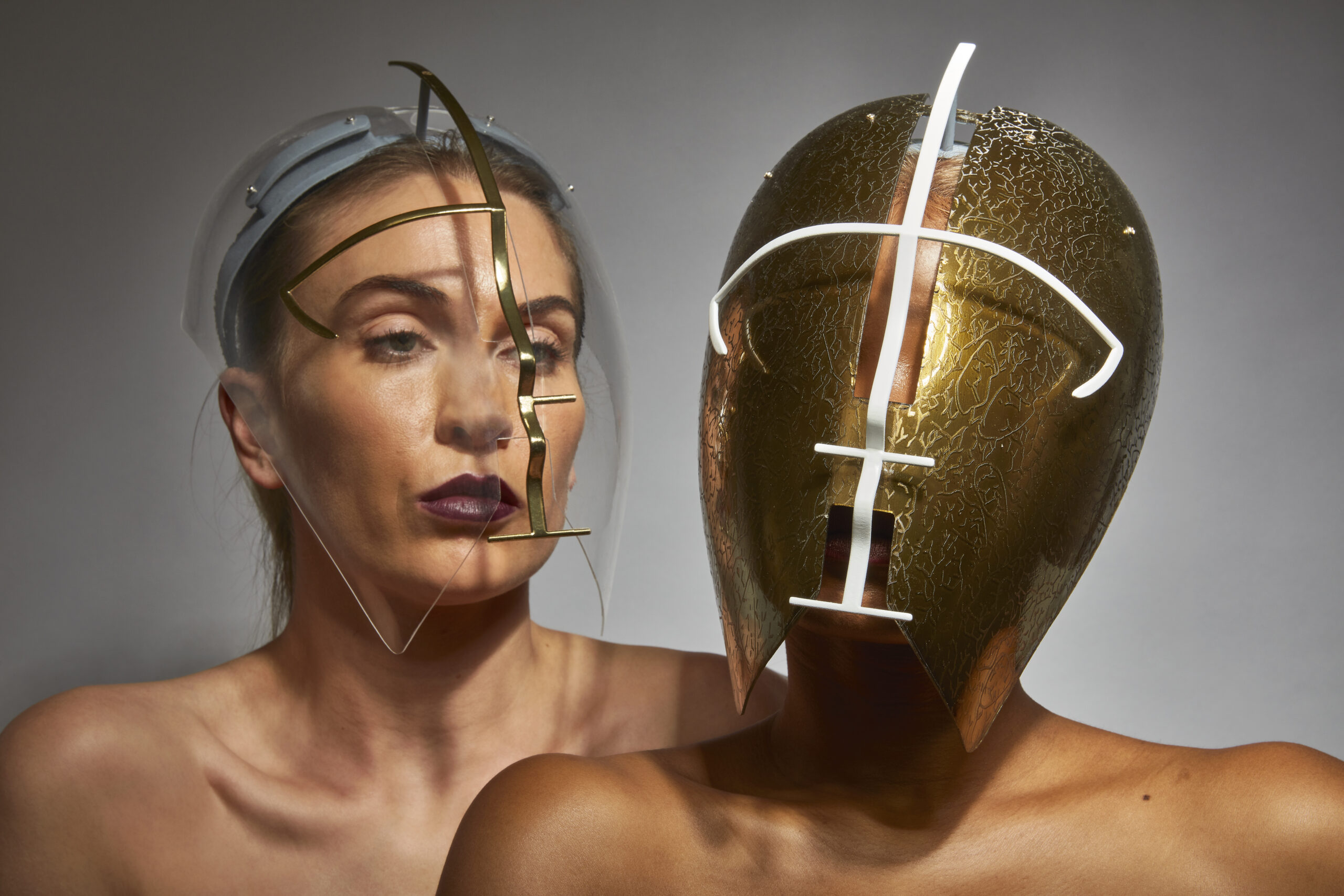
The two variations of the Egaro headpiece. Photo by Mark Cocksedge.
“Egaro takes its name from the site at Termit in eastern Niger, where archaeological evidence confirms that Africa had independently invented its own iron technology 5,000 years ago,” the artist wrote in a statement. “It is a celebration of the discoveries and advancement that originated in the continent. The stencil design running across the headpieces acts as a face shield, covering the eyes, nose and mouth, offering added protection. The pattern that is etched into the visor is called Breathe, which is inspired by the pulmonary veins of the lungs.”
Egaro, as well as the second mask Pioneer Futures, “follow an African fractal rhythm.” Pioneer Futures is a classic bubble accented by a pleated suede collar that is meant to also reference the age of scientific discovery. Ògún is named after the traditional Yorùbá god of war, metal, and technology. It has a visor, with a neck guard made with cast bronze in one iteration and brass in another. Like Egaro, Ògún comes in opaque and clear, a difference which allows for a significant variation in the feel of the piece.
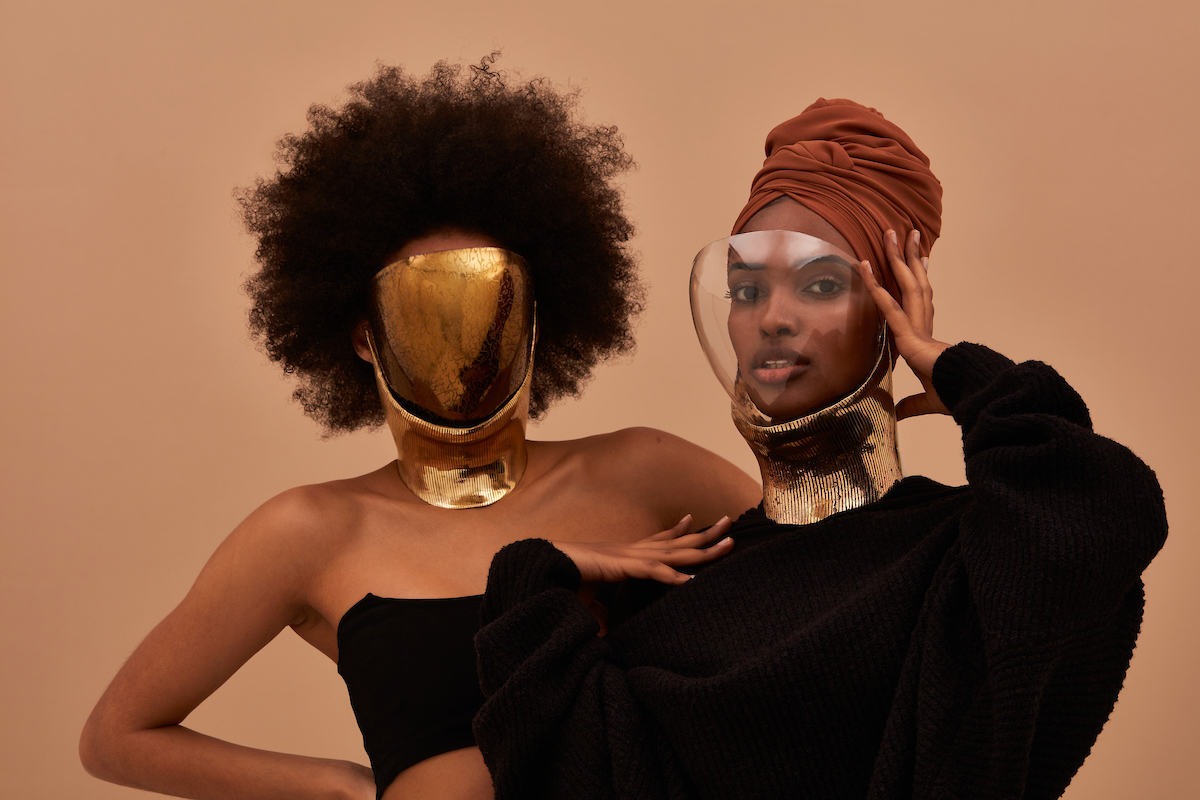
Ògún headpiece; photo by Mark Cocksedge.
When people talk about Africa, they tend to focus on the past, and these new pieces seek to inject African traditions with a global futurism that reflects the staggering innovation of that massive ethnically and historically diverse continent. This topic is of particular importance to Oshinowo, who has a regular column at Omeka called “Afromodernist: Identity, Architecture & Sexuality.”
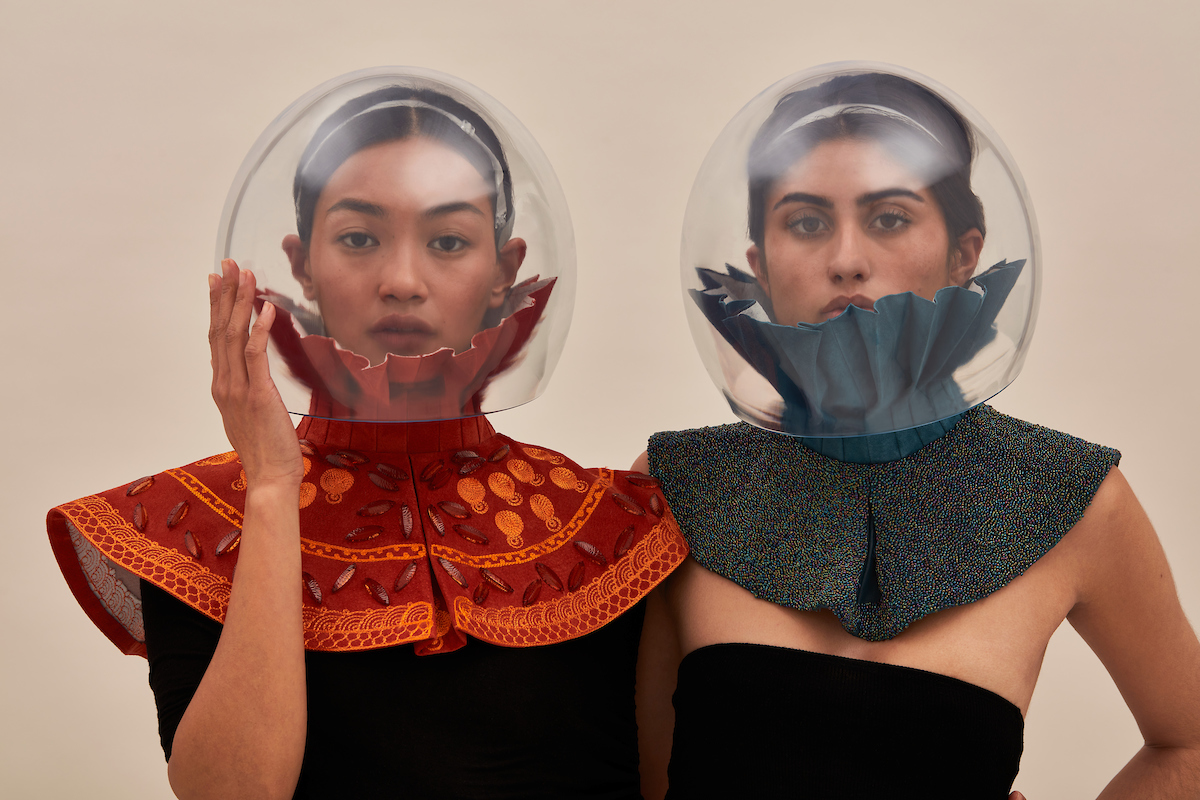
Pioneer futures headpiece; photo by Mark Cocksedge.
These masks are one of the first efforts that have transcended the sometimes gratuitous trend-riding of other brands into an iconic, artistic object that will have aesthetic durability precisely because it imagines beyond the present.


